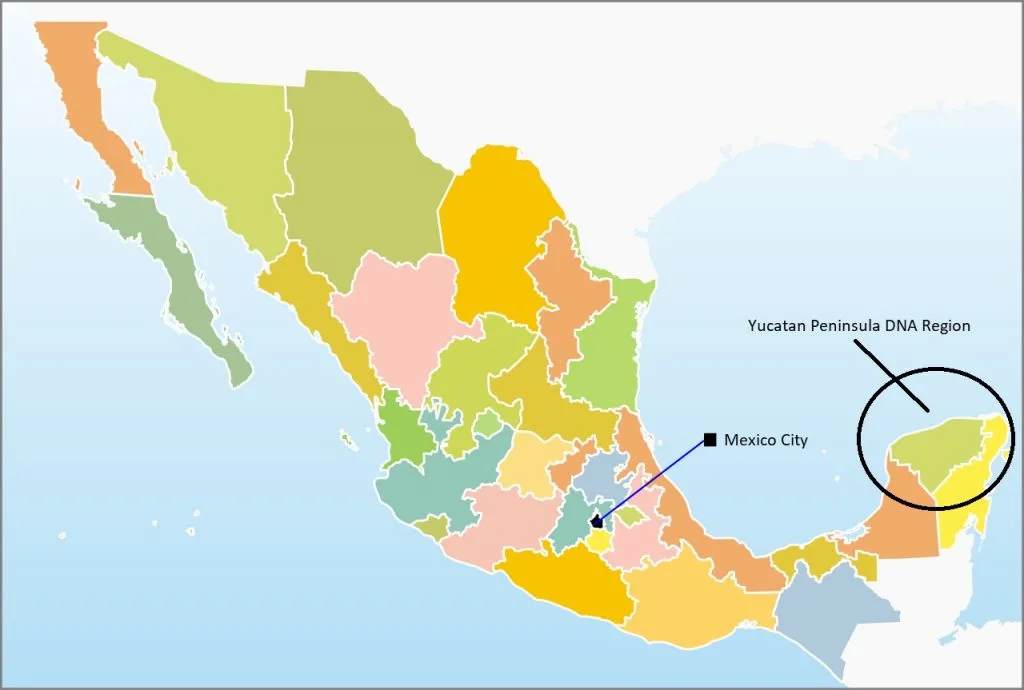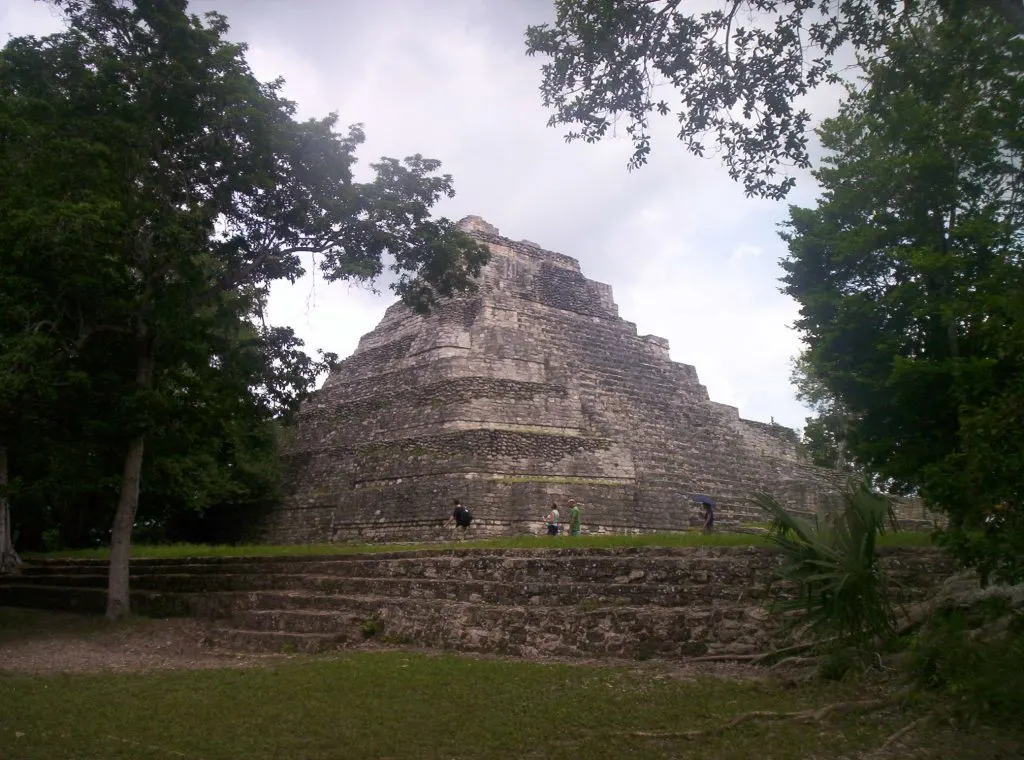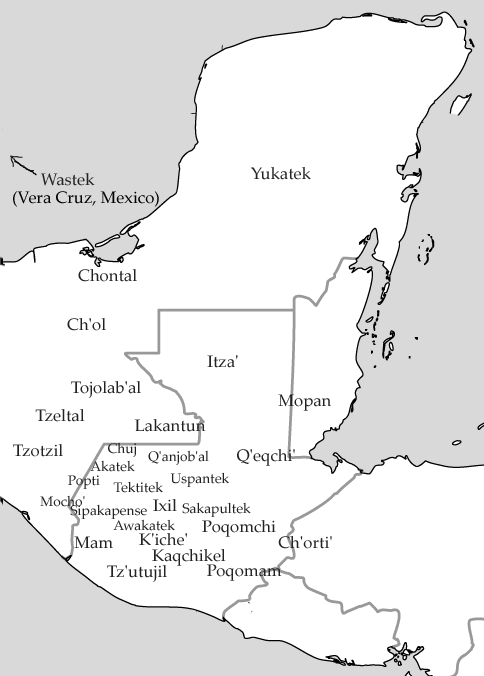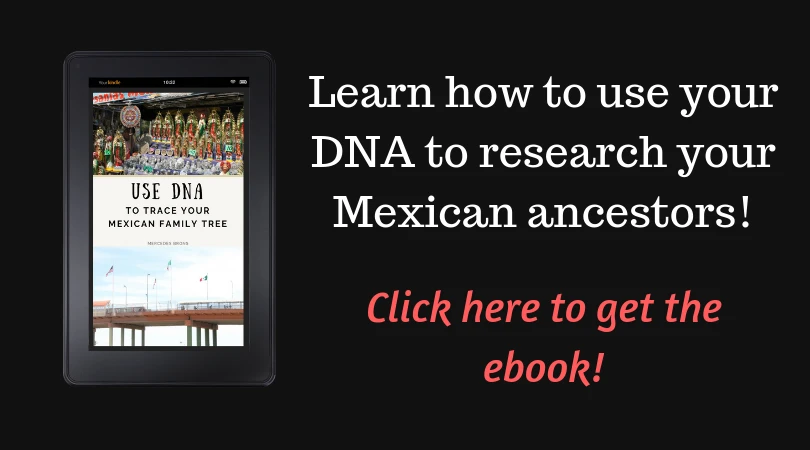Did you get Indigenous Americas - Yucatan Peninsula on your Ancestry DNA results? This region is one of 87 Mexican regions and sub-regions currently available on Ancestry results.

In this post, learn more about this fascinating region and its people, as well as:
- Which countries and regions are located within the Yucatan Peninsula DNA region
- Who are the people of the Yucatan Peninsula DNA region
- How to research your ancestors from the Yucatan Peninsula
The Yucatan Peninsula has a long, fascinating history. Central to the story of indigenous Mesoamerica, it continues to play an important role in modern times.
Where is the Indigenous Americas - Yucatan Peninsula region located?
The Indigenous Americas - Yucatan Peninsula is located on the portion of the Yucatan Peninsula within the borders of Mexico. The Mexican Yucatan Peninsula contains three of Mexico's 32 states.

Image credit: ElBart09 Generously shared with the CC by 4.0 International License
The geographic land form named Yucatan Peninsula, or Península de Yucatán in Spanish, covers portions of three countries: Mexico, Guatemala and Belize.
The Yucatan Peninsula, and the corresponding DNA region, is surrounded by bodies of water on three sides, the largest two being the Caribbean Sea and the Gulf of Mexico. Interestingly, the Chicxulub crater - one of the most consequential craters in earth's history and the one that likely caused the extinction of the dinosaurs, was discovered right off the coast of the peninsula in the Gulf of Mexico.
The crater caused the creation of cenotes, which are beautiful, natural, water-filled pits. These pits have historically been important water sources for the Maya inhabitants of the Yucatan Peninsula, and have become famous tourists destinations in modern times.

Which Mexican states are in the Yucatan Peninsula?
The Indigenous Americas - Yucatan Peninsula DNA region covers the Mexican state of Yucatan completely, as well as portions of Campeche and Quintana Roo.
Who are the Indigenous Americas - Yucatan Peninsula people?
There are about four million people currently living in the Mexican portion of the Yucatan Peninsula. The indigenous inhabitants of this region descend from the ancient Maya peoples, whose modern descendants in Mexico and Central America likely number well over six million.
There has been movement of people to the Yucatan Peninsula from the continents of Europe, Africa, and Asia, for more than five hundred years. People who live in, or have ancestry from, the Yucatan Peninsula DNA region might also find that they have ancestors who were from Spain or Korea, Bantu from Zambia, or even Mennonite from Central Europe, among many other places.
The modern Maya peoples belong to different groups, and their names vary based on their location throughout the broader region. Even though they share a common ancestry, modern Maya count more than two dozen distinct languages with a common origin spoken among them.

Image License: Public Domain
Most of the indigenous Maya living within the Mexican states of Yucatan, Campeche and Quintana Roo speak Yucatec Maya. However, there are other indigenous languages also spoken in the region, especially in Campeche and Quintana Roo.
How did you inherit DNA from Yucatan Peninsula?
If you received the Indigenous Americas - Yucatan Peninsula on your DNA results, there is a high probability that you had ancestors living within this region at some point in the past several hundred years. Most people with this region in their results reading this article will have inherited the region from a close ancestor who could trace their ancestry to a Mexican state within the Yucatan Peninsula.
The United States and Canada have been popular destinations for many years for immigrants from many Latin American countries, and Mexico is no exception. While only a small minority of Mexican immigrants living in the United States are from Campeche, Quintano Roo, or Yucatan, this is still one possible way that you may have inherited this region.
If you have known ancestors from nearby areas, such as Guatemala, neighboring Mexican states, or even Cuba, your ancestor(s) may have had roots in the Yucatan Peninsula.
The best way to explore your ancestry and, possibly, learn exactly how DNA from the Yucatan Peninsula was passed down to you is to research your ancestors. It's easier than you might think!
How to research your Yucatan Peninsula ancestors
The first step to researching your Yucatan Peninsula ancestors begins with your most recent ancestors: your parents, and grandparents. Even if you have no known connection to the peninsula, tracing your ancestry directly through your grandparents will provide valuable clues about your roots in the Yucatan area of Mexico.
Talk with your parents, and any older relatives, including grandparents, aunts, and uncles, to find out what they know about their ancestors. I recommend starting a small family tree on Ancestry, and going back as far as you can, generation-by-generation.
Amazingly, there are some genealogical records for certain Mexican regions of the Yucatan Peninsula going back as far as 1543. The Catholic Church has played an important role in documenting vital records, such as births, deaths, and marriages.
You can access many records for free on a website called Family Search. The link below will take you directly to the Yucatan, Campeche, and Quintana Roo, indexes that are available for search:
It is important to note that the state names and boundaries have changed over the centuries. By researching the name of the place where your ancestor is from, you might realize that their records are held in a municipality that falls under a new jurisdiction.
Conclusion
I hope that this post has helped you understand more about how you made have inherited DNA from ancestors from the Yucatan Peninsula DNA region on Ancestry. Plus, I hope you are inspired to learn more about them.
If you have any questions about something that you read in this post, or if you would like to share your own knowledge about your ancestors from the Yucatan region of Mexico, I would love to hear from you in the discussion below.
Thanks for stopping by!

